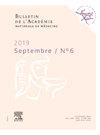Le financement des hôpitaux publics. Approche conceptuelle en France : Du prix de journée à la tarification à l’activité
IF 0.2
4区 医学
Q3 MEDICINE, GENERAL & INTERNAL
引用次数: 0
Abstract
Le choix des modes de financement de l’hôpital, dans les systèmes de santé développés, est assumé par un tiers payeur, public ou privé en fonction de l’organisation de la protection sociale du pays. Depuis 1950, en France, plusieurs stratégies ont été proposées pour déterminer les ressources nécessaires à la prise en charge des patients hospitalisés. Trois mécanismes se sont suivis pour établir le budget hospitalier : le prix de journée, la dotation globale de financement et enfin la tarification à l’activité, avec deux caractéristiques que l’on a cherché à améliorer, d’une part, un financement prospectif et non rétrospectif, d’autre part, un niveau de connaissance des soins nécessaires pour une pathologie. Le premier a consisté en un forfait à la journée calculé sur les coûts totaux annuels de l’établissement divisés par le nombre de journées effectué pendant cette même année. Le second a consisté à utiliser le budget de l’année N en lui appliquant un taux directeur (pourcentage d’augmentation) pour obtenir le budget de l’année N + 1. Le troisième est issu d’un mécanisme mis en place aux USA c’est à dire un système de classement des patients selon leurs besoins dans des groupes homogènes de malades ou iso-ressources : le financier sait ainsi ce qu’il rémunère. Une comparaison succincte avec le financement des hôpitaux privés à but, lucratif, ex-objectif quantifié national y est introduite. Mais le financement n’est qu’un élément participant à l’efficience du système de soins hospitaliers, la qualité des soins, la planification et le concours de la médecine ambulatoire de premier recours.
In developed healthcare systems, the choice of hospital financing methods is managed by a third-party payer, whether public or private, depending on the organization of the country's social protection system. Since 1950, France has explored several strategies to determine the resources required for the care of hospitalized patients. Three mechanisms have been implemented successively to establish hospital budgets: per diem rates, overall operating grant, and, finally, activity-based financing. These mechanisms helped to identify two key characteristics that needed to be improved. The first one was a day package where the bill was calculated on the number of days that the patient was hospitalized and not based on the treatment(s) required or made, and second, a better understanding of the care required for specific pathologies. The first mechanism was based on a per diem rate, calculated by dividing the total annual costs of the hospital by the number of patient days in the same year. The second mechanism involved using the budget of year N and applying a directive growth rate to determine the budget for year N + 1. The third mechanism, inspired by a system introduced in the United States — Diagnosis Related Groups (DRG) — classifies patients based on their care needs into homogeneous patient groups or resource-consistent groups. This approach allows payers to understand precisely what they are financing. A brief comparison with the financing of private hospitals — based on the former national quantified objective (objectif quantifié national, OQN) — is also included. However, financing is only one element contributing to the efficiency of hospital care systems. The quality of care, strategic planning, and the collaboration of primary outpatient care providers also play crucial roles.
资助公立医院。法国的概念方法:从日价到活动定价
在发达的卫生系统中,医院的资金来源是由第三方支付的,可以是公共的,也可以是私人的,这取决于国家的社会保障组织。自1950年以来,法国提出了几种战略,以确定住院病人护理所需的资源。医院三个机制都跟着来编制预算:一天的价格、配置全面供资和活动最后的定价与两种特性,人们设法改进,一方面有前瞻性和回顾性无资金,另一方面是一个病态所需的护理方面的知识水平。第一种是每日固定费率,由机构的年度总成本除以当年的天数计算。第二种方法是使用N年预算,应用基准利率(增长百分比)来获得N + 1年的预算。第三种方法源于美国的一种机制,即根据患者的需求将患者划分为同质的患者群体或等资源群体,这样财务人员就知道他们得到了什么报酬。它简要地比较了以营利为目的、以前是国家量化目标的私立医院融资。但是,资金只是决定医院保健系统效率、护理质量、规划和促进初级门诊保健的一个因素。在发达的卫生保健系统中,医院筹资方法的选择由第三方支付人管理,无论是公共的还是私人的,取决于国家社会保护系统的组织。自1950年以来,法国探索了几种战略,以确定住院病人护理所需的资源。在过去的几年里,我们一直在努力提高我们的医疗保健系统的质量。这些机制有助于确定需要改进的两个关键特征。第一个是日间套餐,其中费用是根据病人住院的天数计算的,而不是根据要求或进行的治疗,第二个是更好地了解特定疾病所需的护理。第一个机制是基于人均死亡率,通过将医院每年的总费用除以同一年的患者天数来计算。第二种机制涉及使用N年预算和应用增长率指令来确定N + 1年的预算。第三种机制的灵感来自于美国引入的一种系统——诊断相关组(DRG)——根据患者的护理需求将患者分类为同质的患者组或资源一致的组。这种方法可以让付款人确切地了解他们在融资什么。还根据以前的国家量化目标(国家量化目标,OQN)对私立医院的资金筹措进行了简要比较。然而,资金只是有助于医院护理系统效率的一个因素。护理质量、战略规划和初级门诊护理提供者的合作也发挥着至关重要的作用。
本文章由计算机程序翻译,如有差异,请以英文原文为准。
求助全文
约1分钟内获得全文
求助全文
来源期刊
CiteScore
0.50
自引率
33.30%
发文量
189
审稿时长
47 days
期刊介绍:
Rédigé par des spécialistes à l''intention d''une Communauté pluridisciplinaire le Bulletin de l''Académie nationale de médecine est au service de toutes les professions médicales : médecins, pharmaciens, biologistes et vétérinaires ainsi que de l''Administration et des institutions intervenant dans le domaine de la santé.
Les mémoires originaux et les mises au point sur des thèmes d''actualité sont associés au compte rendu des discussions qui ont suivi leur présentation. Les rapports des commissions sur l''éthique médicale l''exercice de la profession les questions hospitalières la politique du médicament et l''enseignement de la médecine justifient les recommandations de l''Académie.

 求助内容:
求助内容: 应助结果提醒方式:
应助结果提醒方式:


